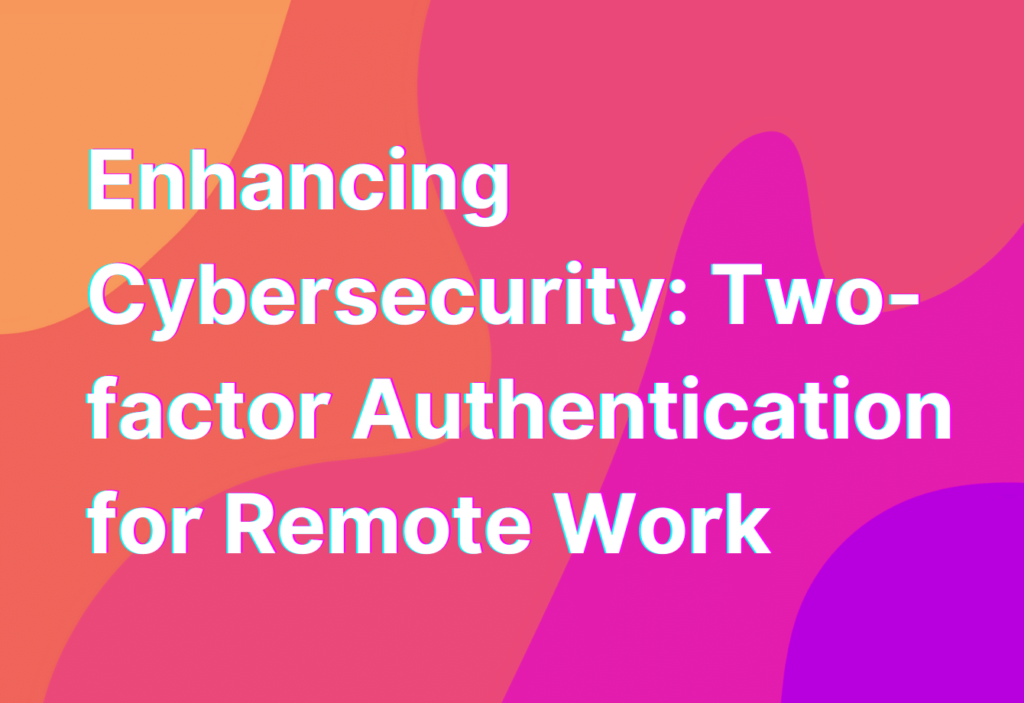Enhancing Cybersecurity: Two-factor Authentication for Remote Work
Welcome back, remote work enthusiasts! Today, we’re diving into the world of cybersecurity and exploring the importance of two-factor authentication for remote work. As remote workers, we rely heavily on technology to connect with our teams and complete our tasks. However, this increased reliance on technology also opens up new vulnerabilities and risks. That’s where two-factor authentication comes in to save the day!
What is Two-Factor Authentication?
Before we delve into the benefits of two-factor authentication, let’s first understand what it is. Two-factor authentication, also known as 2FA, is an extra layer of security that requires users to provide two different types of identification before accessing an account or system. Typically, this involves something you know (like a password) and something you have (like a unique code sent to your phone).
By implementing two-factor authentication, remote workers can significantly enhance the security of their accounts and protect sensitive information from unauthorized access. Now, let’s explore some of the key benefits of using 2FA for remote work.
The Benefits of Two-Factor Authentication for Remote Work
- Enhanced Account Security: With two-factor authentication, even if someone manages to obtain your password, they still won’t be able to access your account without the second factor of authentication. This adds an extra layer of protection and reduces the risk of unauthorized access.
- Protection Against Phishing Attacks: Phishing attacks are a common method used by cybercriminals to trick individuals into revealing their login credentials. However, with 2FA, even if you unknowingly provide your password to a phishing website, the attacker still won’t have the second factor of authentication, preventing them from accessing your account.
- Secure Remote Access: As remote workers, we often access company systems and sensitive information from various locations. Two-factor authentication ensures that even if someone manages to steal your password, they won’t be able to access your accounts without the second factor, providing an additional layer of security for remote access.
- Compliance with Security Regulations: Many industries, such as finance and healthcare, have strict security regulations in place. Implementing two-factor authentication can help remote workers comply with these regulations and ensure the protection of sensitive data.
- Peace of Mind: Knowing that your accounts are protected by two-factor authentication can give you peace of mind, allowing you to focus on your work without constantly worrying about potential security breaches.
Now that we’ve explored the benefits of two-factor authentication, let’s discuss some best practices for implementing 2FA effectively.
Best Practices for Implementing Two-Factor Authentication
- Choose a Reliable Authentication App: When setting up two-factor authentication, it’s important to choose a reliable authentication app that generates unique codes for each login attempt. Popular options include Google Authenticator and Authy.
- Enable Two-Factor Authentication on All Accounts: Don’t limit two-factor authentication to just your work accounts. Enable it on all your personal accounts as well, such as email, social media, and banking platforms.
- Keep Backup Codes: Many two-factor authentication systems provide backup codes that can be used in case you lose access to your authentication app. Make sure to keep these codes in a safe place.
- Regularly Update Passwords: Two-factor authentication is not a substitute for strong passwords. Remember to regularly update your passwords and avoid using the same password for multiple accounts.
- Stay Informed: Cybersecurity threats are constantly evolving. Stay informed about the latest security practices and be cautious of phishing attempts and suspicious emails.
Now that you’re armed with the knowledge of two-factor authentication and its benefits, it’s time to take action and secure your remote work accounts. Remember, cybersecurity is a shared responsibility, and by implementing 2FA, you’re taking an important step towards protecting yourself and your organization.
Wrapping Up
As remote workers, it’s crucial to prioritize cybersecurity and protect our accounts and sensitive information. Two-factor authentication provides an additional layer of security, enhancing account protection and safeguarding against phishing attacks. By following best practices and staying informed about the latest security practices, we can ensure a secure remote work environment.
For more information on vulnerability assessment and cybersecurity for remote work, check out our Vulnerability Assessment page. Stay safe and secure, remote teamers!


